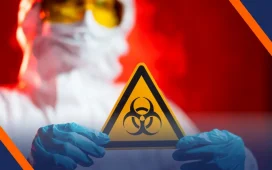The Environmental Protection Agency’s (EPA) ambitious tailpipe emissions standards may be partly canceled out by emissions earlier in the electric vehicle (EV) supply chain, said panelists at a RealClearEnergy webinar last Wednesday.
On April 12, the EPA unveiled new vehicle emissions standards under the Clean Air Act that would mandate auto manufacturers to lower the carbon dioxide (CO2) emissions from their vehicles to a companywide average of 82 grams per mile by 2032. Currently, the average passenger vehicle emits about 400 grams of CO2 per mile. Only one automaker, Tesla, would meet the standard today.
But while tailpipes present a major source of emissions for internal combustion engine (ICE) vehicles, today’s EVs emit greenhouse gasses during the mining and processing of minerals and, in many cases, the generation of electricity.
“You just don’t even know if it’s going to save carbon emissions, which is the point of the whole exercise,” said Rupert Darwall, senior fellow at the RealClear Foundation.
A 2021 International Energy Agency (IEA) analysis found that compared with an ICE car, an EV achieves about a 50% reduction in life-cycle emissions, which accounts for mining and electricity. The report claims that “emissions from minerals development do not negate the climate advantages of clean energy technologies.”
But Mark Mills, senior fellow at the Manhattan Institute, points out that the IEA data relies on approximations based on uncertain assumptions about the supply chains of EV batteries. The range shown on the IEA’s graph could be anywhere from 75% emissions reductions to no reduction at all.
“No one has any idea where on that range you really lie,” said Mills.
Mills last month published a report, Electric Vehicles for Everyone? The Impossible Dream, arguing that EVs present far too many uncertainties and limitations for governments to favor them through bans on the sales of ICE vehicles, or stringent standards like the EPA’s. Beyond emissions, the report cites high costs, humanitarian concerns, and reliance on China as issues for EVs. The report predicts “draconian impediments to affordable and convenient driving and a massive misallocation of capital in the world’s $4 trillion automotive industry.”
“From an engineering sense, flying cars are more likely than all EVs,” Mills quipped in the RealClear webinar.
Others argue these are not disqualifying limitations, but rather hurdles that can be overcome. In a separate interview, Dr. Al-Thaddeus Avestruz, assistant professor of electrical engineering and computer science at the University of Michigan, explained that smaller batteries would reduce the demand for minerals, bringing down emissions, cost and social impact.
“There are many new battery technologies that have less reliance on these really difficult to sustain materials,” said Avestruz.
One such technology, for which Avestruz has a patent, involves wireless power transfer. Akin to a wireless charging pad for mobile phones, Avestruz explained that roads and EVs could be equipped to charge cars as they move.
“You can think of these things as moving chargers that charge over, let’s say, some corridors on the highway, and while moving seamlessly, you just get charged, and you don’t even notice.”
While this technology could be costly to implement, Avestruz notes that wireless power transfer could enable EVs to use smaller batteries, which would reduce the need for unsustainable minerals.
“Potentially, you can reduce the size of the batteries by half. And so the smaller batteries need less raw materials, they’re lighter, meaning that overall, they’re more efficient.”
Other commonly proposed solutions to reduce the impacts of minerals include more sustainable mining practices such as the world’s first all-electric lithium mine currently being developed in Nevada, replacing lithium-ion batteries with sodium-ion batteries, and recycling or recovering minerals from EV batteries to use in new EVs or elsewhere. Avestruz received a National Science Foundation CAREER Award for a project that aims to use retired EV batteries for energy storage on the electric grid.
Prior to the EPA’s new tailpipe standards, major automakers such as Ford Motor Co. and General Motors had stated their intent to join Tesla as leaders in the American EV market. In 2021, Ford announced a historic $11.4 billion investment in new EV manufacturing campuses in Tennessee and Kentucky.
On May 25, Ford CEO Jim Farley joined Tesla CEO Elon Musk on Twitter Spaces to announce that starting early next year, Ford customers would gain access to the more than 12,000 Tesla Superchargers across the U.S. and Canada. In 2025, Ford’s vehicles will also be equipped with Tesla’s North American Charging Standard connector, eliminating the need for an adapter. GM made the same announcement two weeks later.
“Our goal is really to be as helpful as possible in accelerating towards sustainable transport. That’s also why we open source our patents and many of our designs are open sourced. We’re just glad to be as helpful as possible,” said Musk during the announcement.
Farley and Musk each acknowledged various concerns about the EV transition, such as lithium processing and cathode refining. But ultimately, both CEOs expressed optimism that these challenges could be overcome.
“We’re going into the second inning of a nine-inning game, so we’re going to make adjustments along the way,” Farley said.










